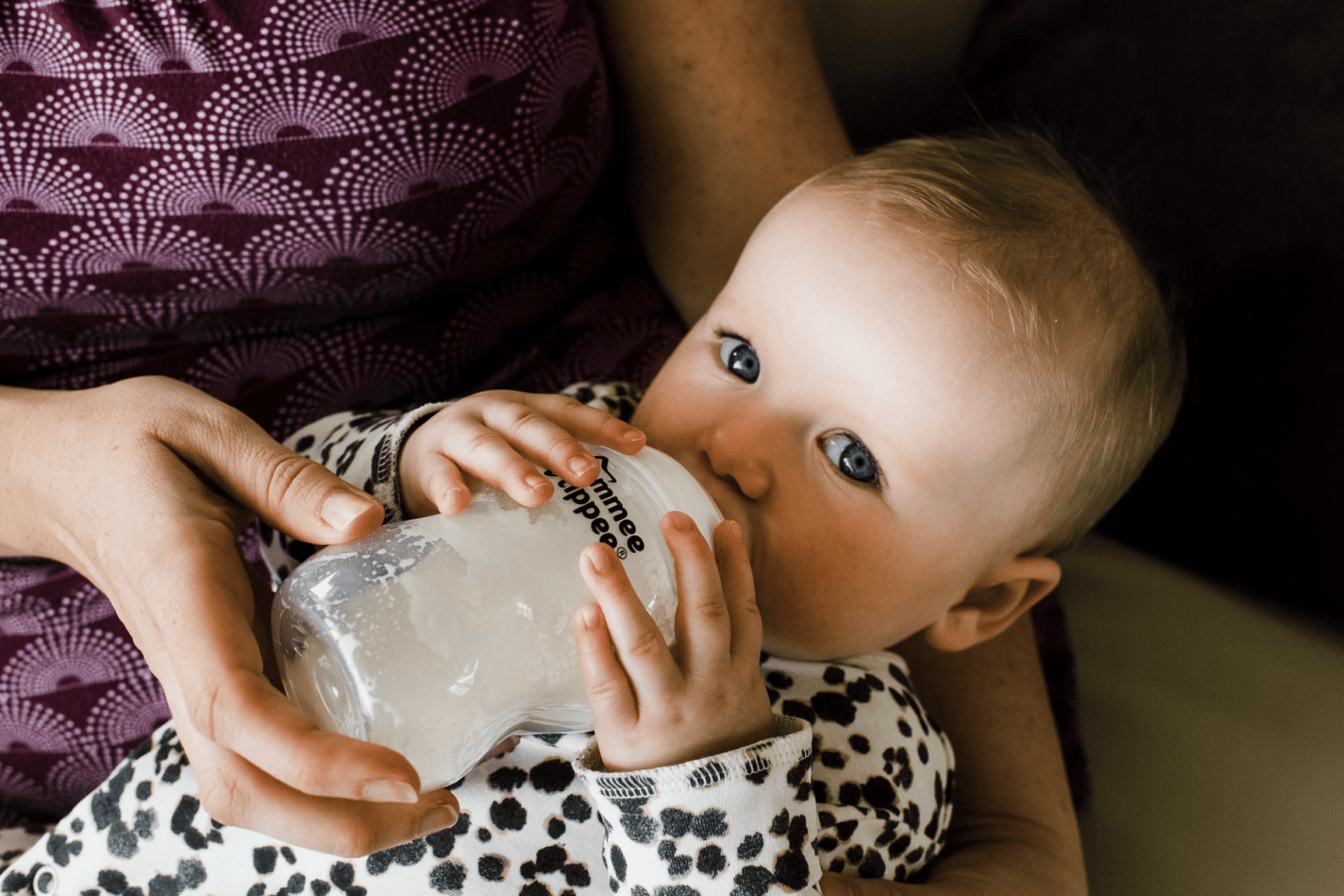Whether you’re breastfeeding, bottle feeding or doing a combination, chances are you’ll need and want to figure out bottle feeding sooner than later. “Most parents do end up needing a bottle at some point in their feeding journey,” says Sharon Swan, brand manager for Tommee Tippee.
But for many new moms and dads, the addition of, or transition to, preparing pumped breastmilk or formula in a bottle can feel daunting.
“Be patient and consistent and don’t let the feeding become a battle or too stressful, for either Mom or Baby,” says Leanne Rzepa, a registered nurse and lactation consultant with Nourish, in Calgary. And, don’t worry, she says: With the right advice—and the right tools—you and Baby can master the bottle.
Learning the bottle basics
The first step is figuring out which products your baby needs for successful feeding. Newborns (usually classified as infants under two months of age) tend to do best with slow flow nipples, says Rzepa. Tommee Tippee has a unique feeding system available in five- and nine-ounce bottles, and a variety of colours and prints. All bottles and nipples are BPA-free and designed by breastfeeding experts to work with baby’s natural feeding action. You’ll need about six sets of bottles and nipples to start, says Rzepa, to ensure you always have a few clean and ready to go when your little one needs to eat.
Before you start making a bottle, Health Canada recommends washing your hands and countertop thoroughly. You’ll need to sterilize your feeding system, too. You can do this by placing bottle parts in a pot of boiling water for two minutes, then allowing them to air dry on a clean dish mat or towel. “Some parents find microwave steam bags or a bottle sterilizer helpful –they can make life a little easier,” says Rzepa. For babies over four months, cleaning feeding equipment thoroughly in warm soapy water is usually sufficient (but ask your health care provider if you are unsure).
Prepping for a feeding
If the breastmilk has just been pumped, or the formula hasn’t been refrigerated, you don’t need to heat it. “Serving bottles at room temperature is safe and recommended,” says Rzepa. If you’re using powdered formula, boil water ahead of time and allow it to cool in a jug on the counter before using it to make a bottle (want to save time? Keep a stash of sterile water in the fridge so that you can just mix the cold water with the newly boiled water. This is especially helpful when you have a screaming kidlet on your hands!). An already prepped bottle from the fridge can be warmed to room temperature using a bottle warmer, or by placing the bottle in a mug of hot water (for no more than 15 minutes, to avoid potentially harmful bacteria). Never warm a bottle in the microwave because it can heat the liquid unevenly, creating a burning risk. “And with breastmilk, important proteins can be denatured due to microwaving,” says Rzepa. (Instead, thaw breastmilk in the fridge overnight, or in a mug of warm water.)
Practicing safe storage
A bottle of breastmilk can be safely left out on the counter for as long as four hours, and formula is typically good for one hour on the counter. If you’re pumping directly into a bottle, this can be stored in the fridge for up to 48 hours, while a premade bottle of formula can be refrigerated for 24 hours. Keep in mind that once a bottle has touched your baby’s mouth, whether it’s breastmilk or formula, it can’t be saved for later—it has to be used within two hours or discarded.
Getting into position
Get ready to give Baby the bottle by making sure you’re seated comfortably and your wee one is propped up in the crook of your arm, so their head and shoulders are higher than their hips. Have Baby’s head turned into you, so you can make eye contact during the feeding, suggests Rzepa.
Never force baby to take the bottle. “Similar to breastfeeding, we want baby to invite the nipple into their mouth,” says Rzepa. You can encourage them to open up, by touching baby’s lips or cheek with the tip of the nipple. Then hold the bottle horizontally, not tilted up, so the milk doesn’t flow too quickly (this can lead to stomach upset).
Setting the pace
Tommee Tippee Closer to Nature Bottle is an ideal option for bottle-reluctant babies. It’s one of the most natural and breast-like nipple designs on the market, with almost 100 percent baby acceptance, says Swan. “Most babies will accept it within three tries,” she says.
While some babies are bottle-shy, others will easily down their milk or formula—sometimes at an impressive rate. “Some babies will just chug the milk without stopping for a break, so sometimes parents will need to stop their baby, allowing them to take a break and catch their breath,” says Rzepa. Helping Baby pace their feed can also assist with tummy upset and ease concerns about colic. Tommee Tippee Advanced Anti-Colic Bottle has a unique venting system that draws air bubbles away from milk, reducing baby's troubles with gas, spit up and fussing.
If your little one seems to be getting too much milk or formula too quickly, this can be a cue to step up to the next level of bottle nipple. Tommee Tippee bottles all come with an identical neck size, for easy transfer of handles, nipples and lids. And they have a range of nipple options, including medium, fast and vari-flow rates, to help your bottle-feeding routine grow with your child. “The other thing people talk about a lot with our bottles is the hourglass shape and the reason for that is, it’s easier to grip—and not just for parents, but for babies,” says Swan. “Anytime you can get your baby to [take on] a bit of independence, and free up your own hands too, that’s just a great thing.”







